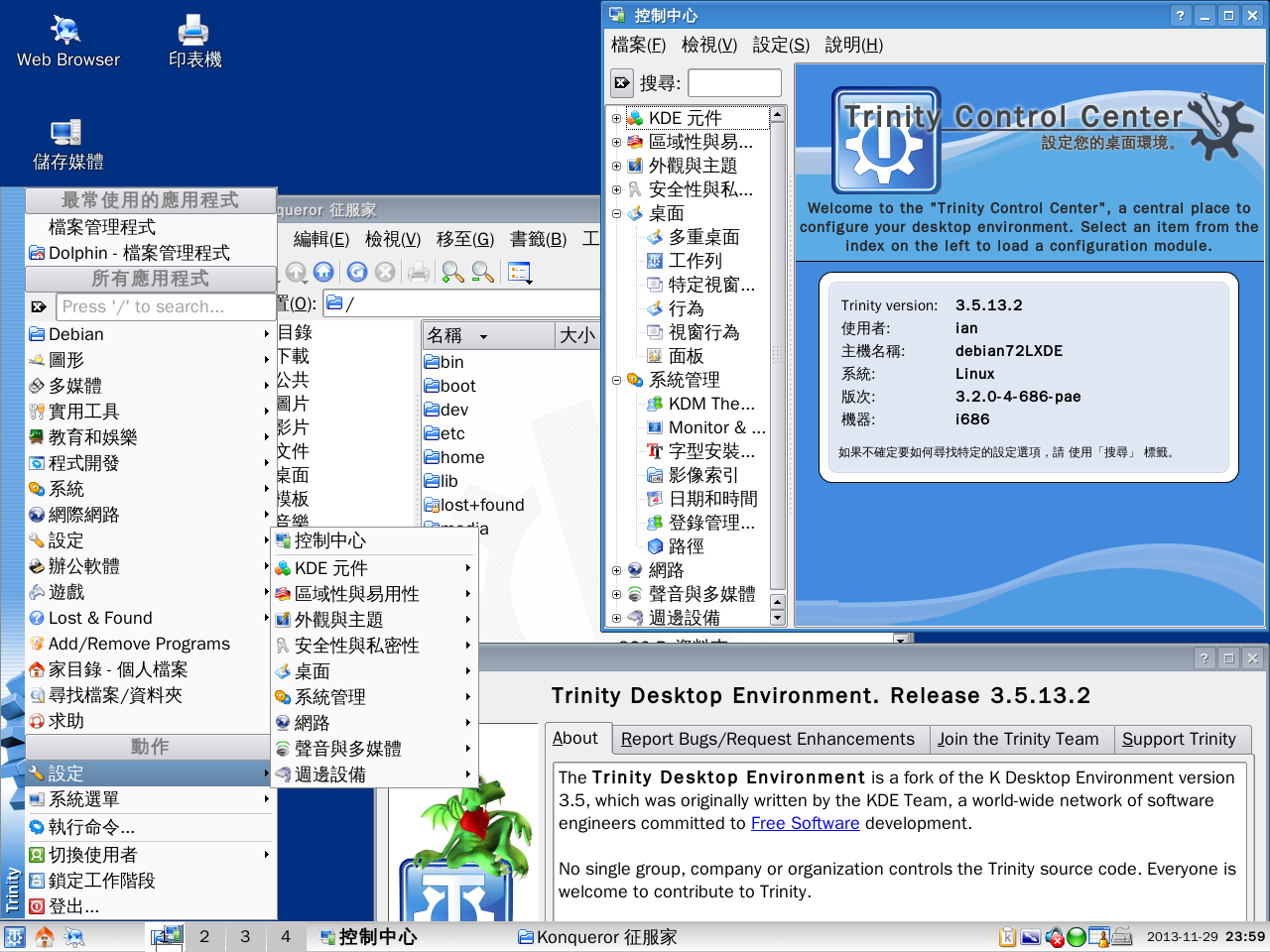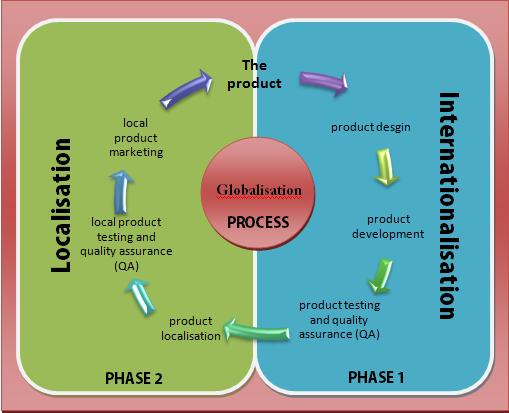|
I18n
In computing, internationalization and localization (American) or internationalisation and localisation (British English), often abbreviated i18n and L10n, are means of adapting computer software to different languages, regional peculiarities and technical requirements of a target locale. Internationalization is the process of designing a software application so that it can be adapted to various languages and regions without engineering changes. Localization is the process of adapting internationalized software for a specific region or language by translating text and adding locale-specific components. Localization (which is potentially performed multiple times, for different locales) uses the infrastructure or flexibility provided by internationalization (which is ideally performed only once before localization, or as an integral part of ongoing development). Naming The terms are frequently abbreviated to the numeronyms ''i18n'' (where ''18'' stands for the number of letters ... [...More Info...] [...Related Items...] OR: [Wikipedia] [Google] [Baidu] |
Numeronym
A numeronym is a number-based word. Most commonly, a numeronym is a word where a number is used to form an abbreviation (albeit not an acronym or an initialism). Pronouncing the letters and numbers may sound similar to the full word, as in " K9" (pronounced "kay-nine") for " canine, relating to dogs". Alternatively, letters between the first and last letters of a word may be replaced by a number representing the number of letters omitted, such as in "i18n" for "internationalization" where "18" stands in for the word's middle eighteen letters (" ternationalizatio ). Sometimes the last letter is also counted and omitted. These word shortenings are sometimes called ''alphanumeric acronyms'', ''alphanumeric abbreviations'', or ''numerical contractions''. According to Tex Texin, the first numeronym of this kind was "S12n", the electronic mail account name given to Digital Equipment Corporation (DEC) employee Jan Scherpenhuizen by a system administrator because his surname was too long ... [...More Info...] [...Related Items...] OR: [Wikipedia] [Google] [Baidu] |
Unicode
Unicode, formally The Unicode Standard,The formal version reference is is an information technology Technical standard, standard for the consistent character encoding, encoding, representation, and handling of Character (computing), text expressed in most of the world's writing systems. The standard, which is maintained by the Unicode Consortium, defines as of the current version (15.0) 149,186 characters covering 161 modern and historic script (Unicode), scripts, as well as symbols, emoji (including in colors), and non-visual control and formatting codes. Unicode's success at unifying character sets has led to its widespread and predominant use in the internationalization and localization of computer software. The standard has been implemented in many recent technologies, including modern operating systems, XML, and most modern programming languages. The Unicode character repertoire is synchronized with Universal Coded Character Set, ISO/IEC 10646, each being code-for-code id ... [...More Info...] [...Related Items...] OR: [Wikipedia] [Google] [Baidu] |
Language Localization
Language localisation (or language localization) is the process of adapting a product's translation to a specific country or region. It is the second phase of a larger process of product translation and cultural adaptation (for specific countries, regions, cultures or groups) to account for differences in distinct markets, a process known as internationalisation and localisation. Language localisation differs from translation activity because it involves a comprehensive study of the target culture in order to correctly adapt the product to local needs. Localisation can be referred to by the numeronym L10N (as in: "L", followed by the number 10, and then "N"). The localisation process is most generally related to the cultural adaptation and translation of software, video games, websites, and technical communication, as well as audio/voiceover, video, or other multimedia content, and less frequently to any written translation (which may also involve cultural adaptation processes) ... [...More Info...] [...Related Items...] OR: [Wikipedia] [Google] [Baidu] |
Digit Grouping
A decimal separator is a symbol used to separate the integer part from the fractional part of a number written in decimal form (e.g., "." in 12.45). Different countries officially designate different symbols for use as the separator. The choice of symbol also affects the choice of symbol for the thousands separator used in digit grouping. Any such symbol can be called a decimal mark, decimal marker, or decimal sign. Symbol-specific names are also used; decimal point and decimal comma refer to an (either baseline or middle) dot and comma respectively, when it is used as a decimal separator; these are the usual terms used in English, with the aforementioned generic terms reserved for abstract usage. In many contexts, when a number is spoken, the function of the separator is assumed by the spoken name of the symbol: ''comma'' or ''point'' in most cases. In some specialized contexts, the word ''decimal'' is instead used for this purpose (such as in International Civil Aviation ... [...More Info...] [...Related Items...] OR: [Wikipedia] [Google] [Baidu] |
Locale (computer Software)
In computing, a locale is a set of parameters that defines the user's language, region and any special variant preferences that the user wants to see in their user interface. Usually a locale identifier consists of at least a language code and a country/region code. Locale is an important aspect of i18n. General locale settings These settings usually include the following display (output) format settings: * Number format setting * Character classification, case conversion settings * Date-time format setting * String collation setting * Currency format setting * Paper size setting * Color setting The locale settings are about formatting output given a locale. So, the time zone information and daylight saving time are not usually part of the locale settings. Less usual is the input format setting, which is mostly defined on a per application basis. Programming and markup language support In these environments, * C * C++ * Eiffel * Java * .NET Framework * REBOL * Ruby * Pe ... [...More Info...] [...Related Items...] OR: [Wikipedia] [Google] [Baidu] |
Decimal Separator
A decimal separator is a symbol used to separate the integer part from the fractional part of a number written in decimal form (e.g., "." in 12.45). Different countries officially designate different symbols for use as the separator. The choice of symbol also affects the choice of symbol for the thousands separator used in digit grouping. Any such symbol can be called a decimal mark, decimal marker, or decimal sign. Symbol-specific names are also used; decimal point and decimal comma refer to an (either baseline or middle) dot and comma respectively, when it is used as a decimal separator; these are the usual terms used in English, with the aforementioned generic terms reserved for abstract usage. In many contexts, when a number is spoken, the function of the separator is assumed by the spoken name of the symbol: ''comma'' or ''point'' in most cases. In some specialized contexts, the word ''decimal'' is instead used for this purpose (such as in International Civil Aviatio ... [...More Info...] [...Related Items...] OR: [Wikipedia] [Google] [Baidu] |
Register (sociolinguistics)
In sociolinguistics, a register is a variety of language used for a particular purpose or in a particular communicative situation. For example, when speaking officially or in a public setting, an English speaker may be more likely to follow prescriptive norms for formal usage than in a casual setting, for example, by pronouncing words ending in ''-ing'' with a velar nasal instead of an alveolar nasal (e.g., ''walking'' rather than ''walkin'''), choosing words that are considered more "formal" (such as ''father'' vs. ''dad'' or ''child'' vs. ''kid''), and refraining from using words considered nonstandard, such as ''ain't'' and ''y'all''. As with other types of language variation, there tends to be a spectrum of registers rather than a discrete set of obviously distinct varieties—numerous registers can be identified, with no clear boundaries between them. Discourse categorisation is a complex problem, and even in the general definition of ''register'' given above (language var ... [...More Info...] [...Related Items...] OR: [Wikipedia] [Google] [Baidu] |
Variety (linguistics)
In sociolinguistics, a variety, also called an isolect or lect, is a specific form of a language or language cluster. This may include languages, dialects, registers, styles, or other forms of language, as well as a standard variety.Meecham, Marjorie and Janie Rees-Miller. (2001) "Language in social contexts." In W. O'Grady, J. Archibald, M. Aronoff and J. Rees-Miller (eds) ''Contemporary Linguistics''. pp. 537-590. Boston: Bedford/St. Martin's. The use of the word "variety" to refer to the different forms avoids the use of the term ''language'', which many people associate only with the standard language, and the term ''dialect'', which is often associated with non-standard varieties thought of as less prestigious or "correct" than the standard.Schilling-Estes, Natalies. (2006) "Dialect variation." In R.W. Fasold and J. Connor-Linton (eds) ''An Introduction to Language and Linguistics''. pp. 311-341. Cambridge: Cambridge University Press. Linguists speak of both standard and ... [...More Info...] [...Related Items...] OR: [Wikipedia] [Google] [Baidu] |
Common Locale Data Repository
The Common Locale Data Repository Project, often abbreviated as CLDR, is a project of the Unicode Consortium to provide locale data in XML format for use in computer applications. CLDR contains locale-specific information that an operating system will typically provide to applications. Among the types of data that CLDR includes are the following: * Translations for language names * Translations for territory and country names * Translations for currency names, including singular/plural modifications * Translations for weekday, month, era, period of day, in full and abbreviated forms * Translations for time zones and example cities (or similar) for time zones * Translations for calendar fields * Patterns for formatting/parsing dates or times of day * Exemplar sets of characters used for writing the language * Patterns for formatting/parsing numbers * Rules for language-adapted collation * Rules for spelling out numbers as words * Rules for formatting numbers in traditional num ... [...More Info...] [...Related Items...] OR: [Wikipedia] [Google] [Baidu] |
Date And Time Representation By Country
Different conventions exist around the world for date and time representation, both written and spoken. Differences Differences can exist in: *The calendar that is used. *The order in which the year, month, and day are represented. (Year-month-day, day-month-year, and month-day-year are the common combinations.) *How weeks are identified (see seven-day week) *Whether written months are identified by name, by number (1–12), or by Roman numeral (I-XII). *Whether the 24-hour clock, 12-hour clock or 6-hour clock is used. *Whether the minutes (or fraction of an hour) after the previous hour or until the following hour is used in spoken language. *The punctuation used to separate elements in all-numeric dates and times. *Which days are considered the weekend. ISO 8601 International standard ISO 8601 (''Representation of dates and times'') defines unambiguous written all-numeric big-endian formats for dates, such as 2021-12-31 for 31 December 2021, and time, such as 23:59: ... [...More Info...] [...Related Items...] OR: [Wikipedia] [Google] [Baidu] |
Computer Software
Software is a set of computer programs and associated documentation and data. This is in contrast to hardware, from which the system is built and which actually performs the work. At the lowest programming level, executable code consists of machine language instructions supported by an individual processor—typically a central processing unit (CPU) or a graphics processing unit (GPU). Machine language consists of groups of binary values signifying processor instructions that change the state of the computer from its preceding state. For example, an instruction may change the value stored in a particular storage location in the computer—an effect that is not directly observable to the user. An instruction may also invoke one of many input or output operations, for example displaying some text on a computer screen; causing state changes which should be visible to the user. The processor executes the instructions in the order they are provided, unless it is instructed ... [...More Info...] [...Related Items...] OR: [Wikipedia] [Google] [Baidu] |




